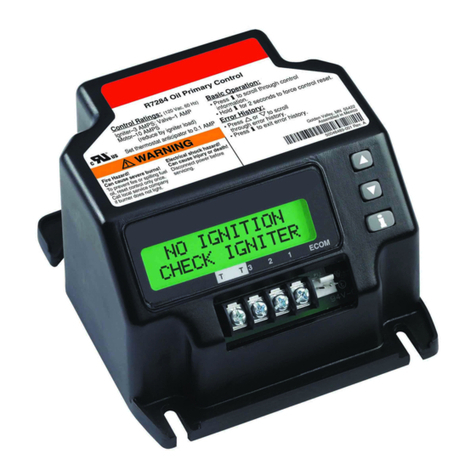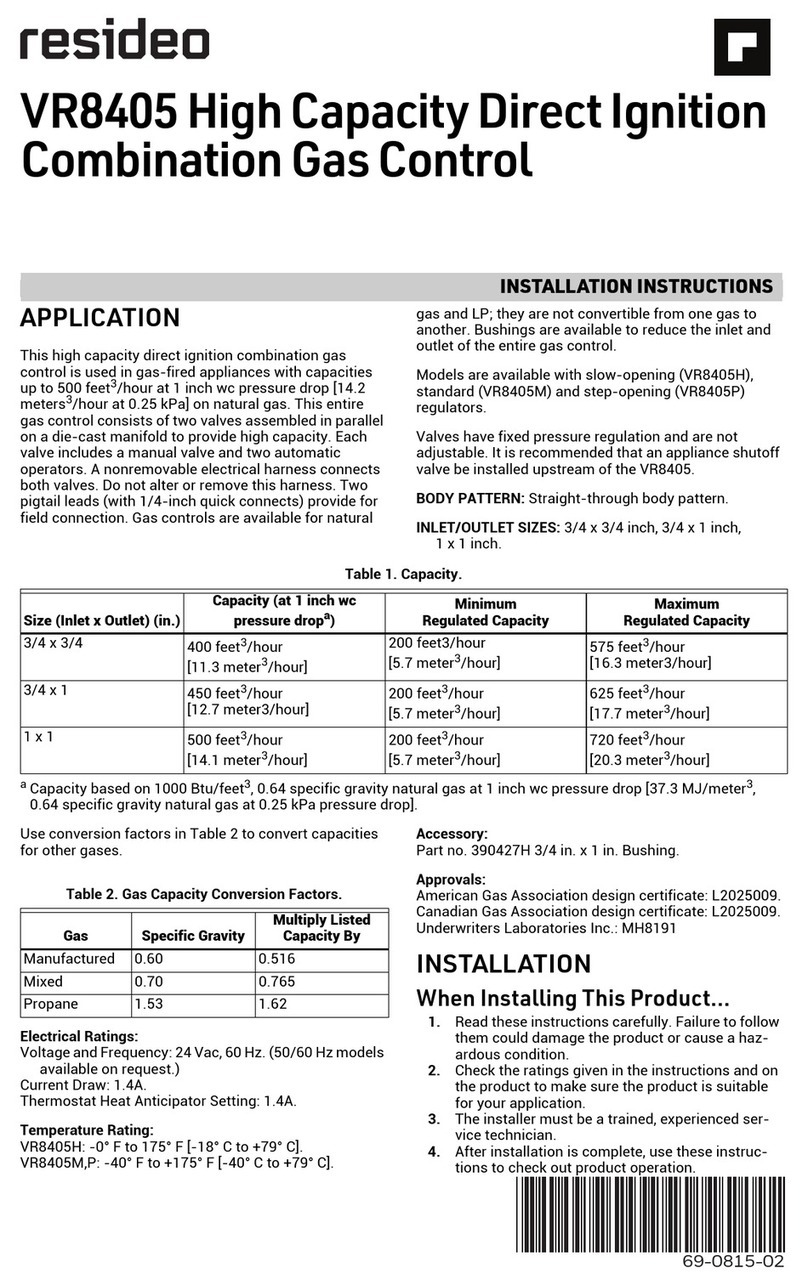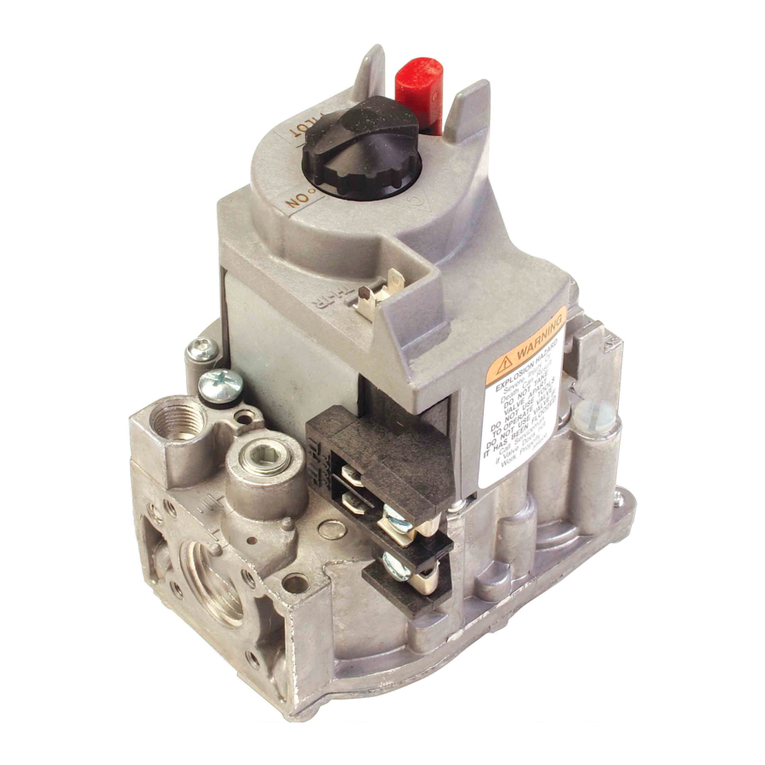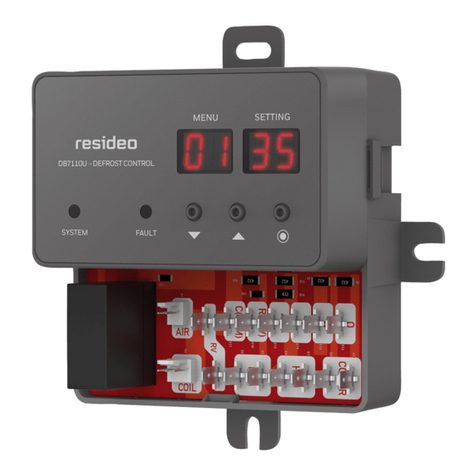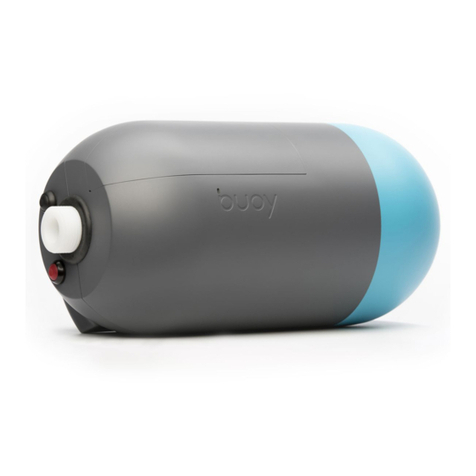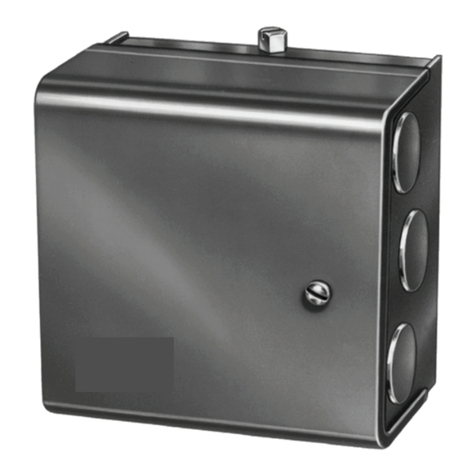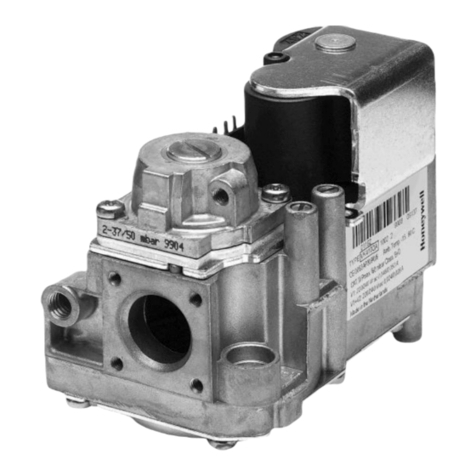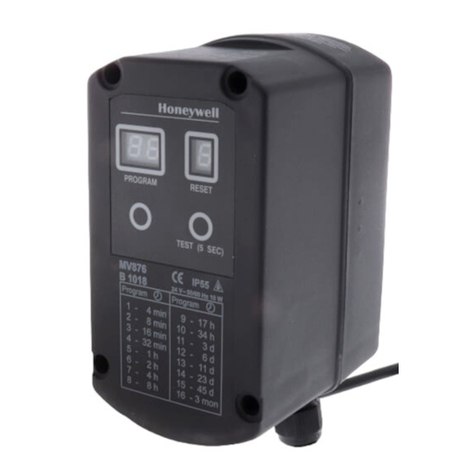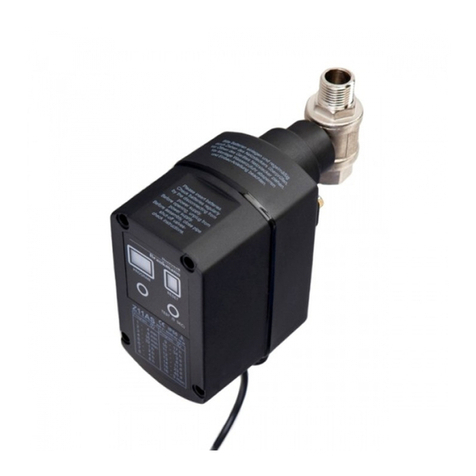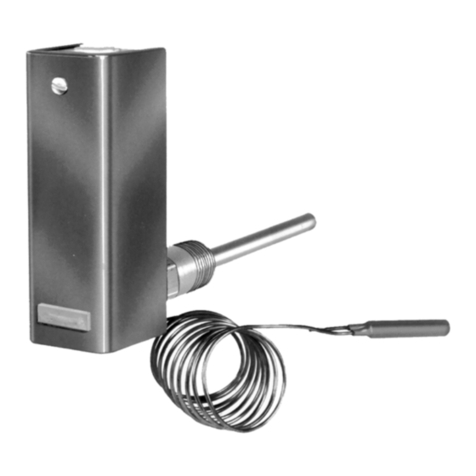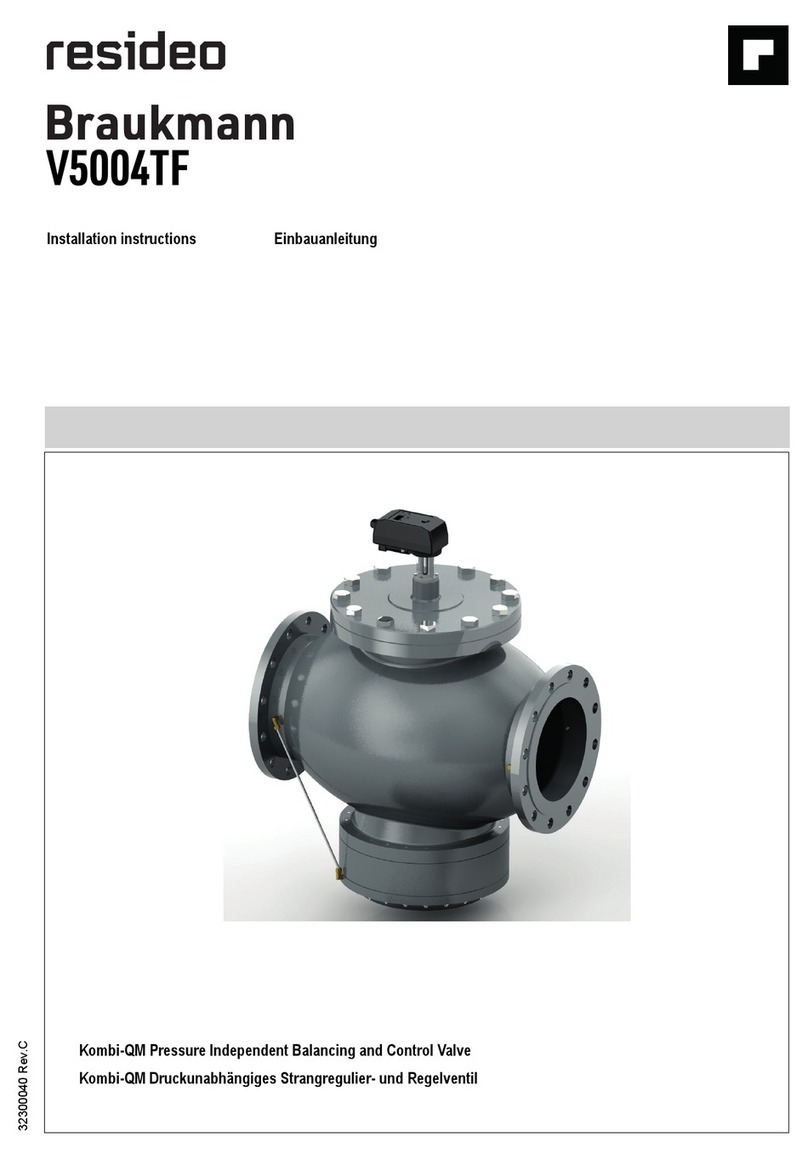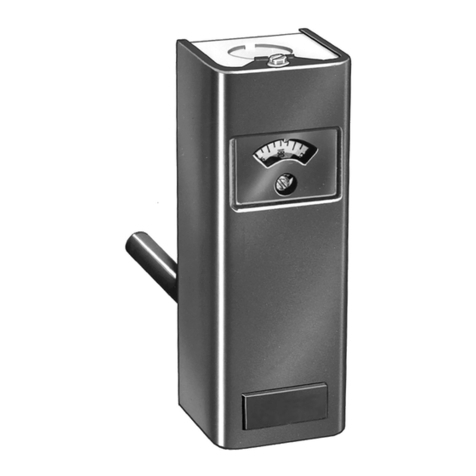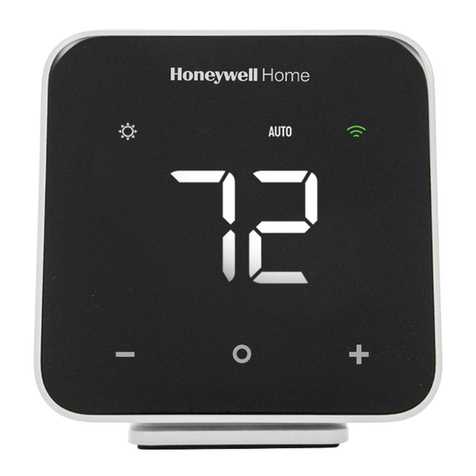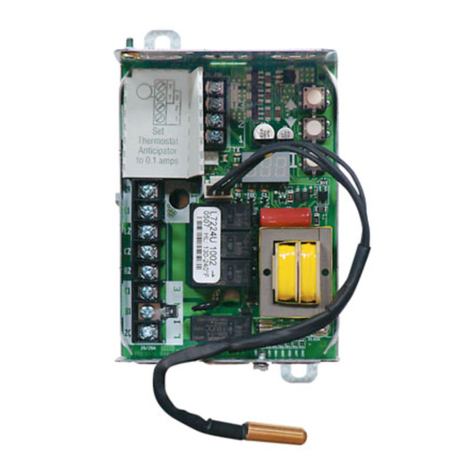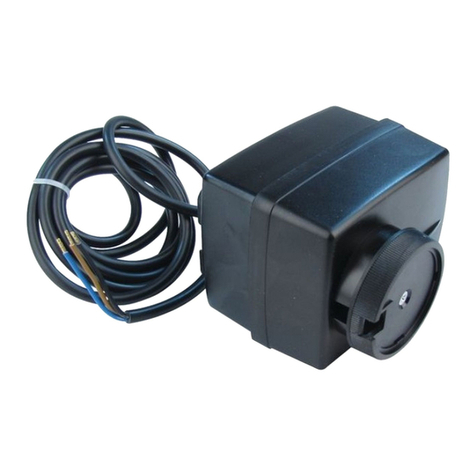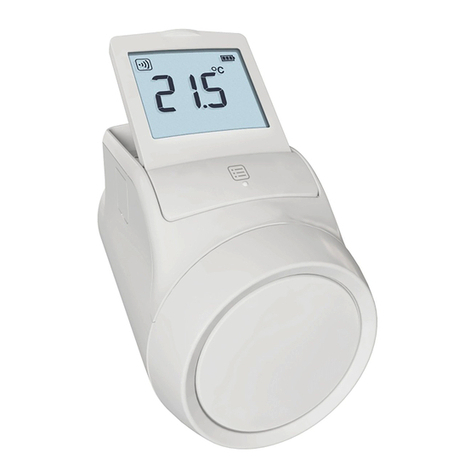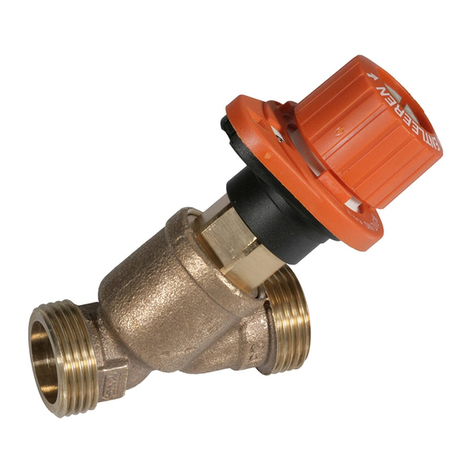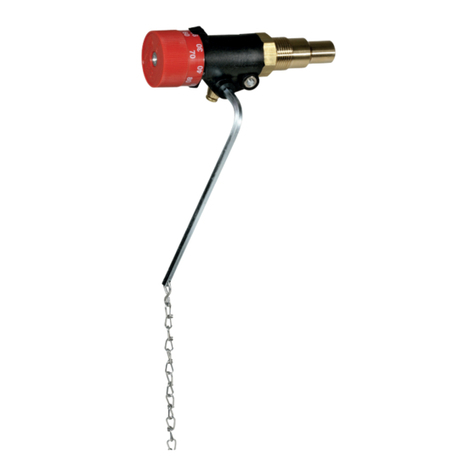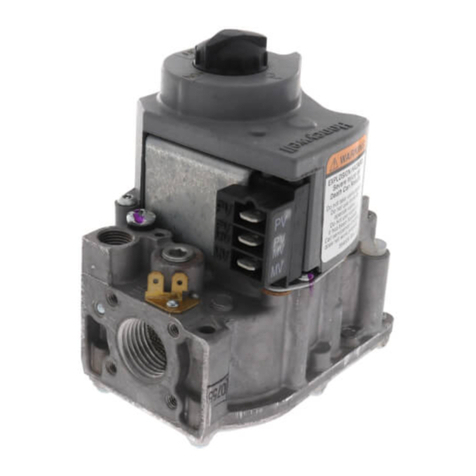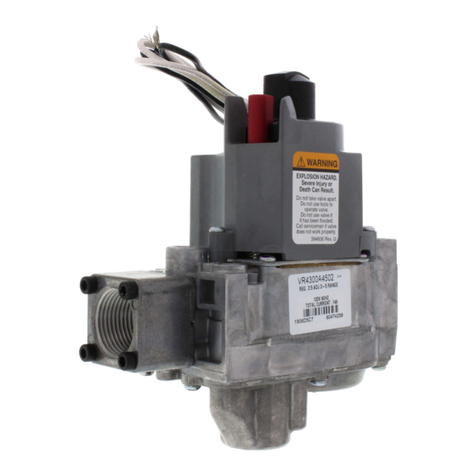
VR8245 AND VR8345 ELECTRONIC IGNITION GAS CONTROLS
369-2013—04
Converting Between Natural And LP
Gas
FIRE OR EXPLOSION HAZARD
CAN CAUSE PROPERTY DAMAGE, SEVERE
INJURY, OR DEATH
Do not attempt to use a gas control set for natural
gas on LP gas or a gas control set for LP gas on
natural gas.
Convert standard-opening, slow-opening, and 2 stage
gas controls from natural gas to LP gas with the
conversion kit included with this gas control. For
conversion kit part number, see Table 3.
To convert from one gas to another:
VR8245M, H, K AND VR8345M, H, K:
1. Turn off gas supply at the appliance service valve.
2. Remove regulator cap screw and pressure regula-
tor adjusting screw. Refer to Fig. 3.
3. Remove the existing spring.
4. Insert the replacement spring. Refer to Fig. 4.
5. Install the new plastic pressure regulator adjust-
ment screw. Assure that the screw top is flush with
the regulator top.
6. Turn pressure regulator adjustment screw clock-
wise eleven complete turns. The preliminary pres-
sure setting is approximately 10.0 in. wc (2.5 kPa)
for LP gas regulator (393691) and 3.5 in. wc (0.9
kPa) for natural gas regulator (394588).
7. Check the regulator setting using a manometer or
by clocking the gas meter. See Check and Adjust
Gas Input to Main Burner section.
8. Install the new cap screw and O ring.
9. Mount conversion label on the gas control.
VR8345Q:
1. Turn off gas supply at the appliance service valve.
2. Remove the pressure regulator cover assembly.
Refer to Fig. 5.
3. Remove the existing stem/spring assembly.
4. Insert the replacement stem/spring assembly.
5. Replace the pressure regulator cover assembly and
tighten screws.
6. Mount conversion label on the gas control
7. Check the regulator setting using a manometer or
by clocking the gas meter. See Check and Adjust
Gas Input to Main Burner section.
INSTALL BUSHINGS TO CONTROL
1. Remove the seal over the control inlet or outlet.
2. Apply a moderate amount of good quality pipe
compound to the bushing, leaving two end threads
bare. See Fig. 1. On an LP installation, use com-
pound that is resistant to LP gas. Do not use Teflon
tape.
3. Insert the bushing in the control and carefully
thread the pipe into the bushing until tight.
Fig. 1. Use moderate amount of pipe compound.
Complete the instructions below for installing the piping,
installing the control, connecting the pilot gas tubing and
the wiring. Make sure the leak test you perform on the
control after completing the installation includes leak
testing the adapters and screws.
Choose Gas Control Location
Locate the combination gas control in the appliance
vestibule on the gas manifold. In replacement
applications, locate the gas control in the same location
as the old control.
Do not locate the gas control where it can be affected by
steam cleaning, high humidity, dripping water, corrosive
chemicals, dust or grease accumulation, or excessive
heat.
For proper operation, follow these guidelines:
• Locate gas control in a well-ventilated area.
• Mount gas control high enough above the cabinet
bottom to avoid exposure to flooding or splashing
water.
• Make sure the ambient temperature does not exceed
the ambient temperature ratings for each component.
• Cover gas control when the appliance is cleaned with
water, steam, or chemicals or to avoid dust and grease
accumulation.
• Avoid locating gas control where exposure to
corrosive chemical fumes or dripping water is
possible.
Install Piping to Gas Control
All piping must comply with applicable codes and
ordinances or with the National Fuel Gas Code (ANSI
Z223.1 NFPA No. 54), whichever applies. Tubing
installation must comply with approved standards and
practices.
1. Use new, properly reamed pipe free from chips. If
tubing is used, make sure the ends are square,
deburred and clean. Make sure all tubing bends are
smooth and without deformation.
2. Run pipe or tubing to the gas control. If tubing is
used, obtain a tube-to-pipe coupling to connect
the tubing to the gas control.
3. Install sediment trap in the supply line to the gas
control. See Fig. 2.
TWO IMPERFECT
THREADS GAS CONTROL
THREAD PIPE THE AMOUNT
SHOWN IN TABLE FOR
INSERTION INTO GAS CONTROL
APPLY A MODERATE AMOUNT OF
PIPE COMPOUND TO PIPE ONLY
(LEAVE TWO END THREADS BARE).
M3075B
PIPE

